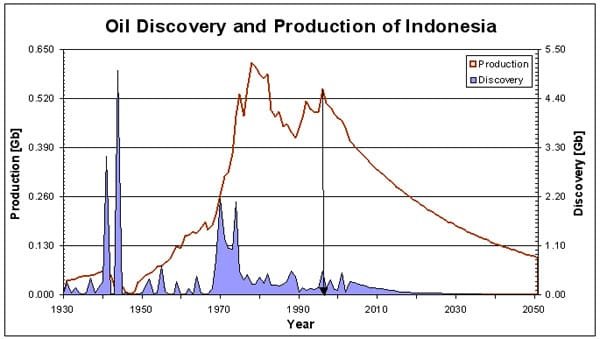Financial Times: “Indonesia, the current president of Opec, became a net importer of crude oil for the first time in February, according to official figures. This raises questions about its status as a member of the oil cartel.
The move comes at a time Jakarta is playing a leading role in presenting the public face of the Organisation of Petroleum Exporting Countries to disgruntled oil consumers facing oil prices at 14-year highs. The reversal was caused by Indonesia’s difficulties in attracting oil and gas investment as its fields decline and as its domestic demand increases.
According to Indonesia’s Directorate-General of Oil and Gas, in the month of February, Indonesia exported 13.5m barrels of crude, or 467,082 b/d, and imported 14.9m barrels, or 515,289 b/d.
That was followed in March by the record import of 17.4m barrels of crude, or 561,733 b/d, and exports of 14.3m barrels, or 462,430 b/d. In both months, Indonesia’s total production stood at about 1.1m b/d, below its current Opec quota of 1.27m b/d.”
Uppsala Hydrocarbon Depletion Study Grope has studied Indonesia in detail as you can see in the following figure.

Indonesia had a first peak in the production around 1980 that can be related to the discoveries in 1941 and 1944. In 1969, 1970 and 1974 they made three new rather significant discoveries, and that gave the second peak in the production in 1995. The five-year trend is now -2,97%. According to our predictions, the capacity for Indonesia is now 1.06 m b/d, and this is also the production rate that Financial Times points. Indonesia cannot help an oil-thirsty world.
